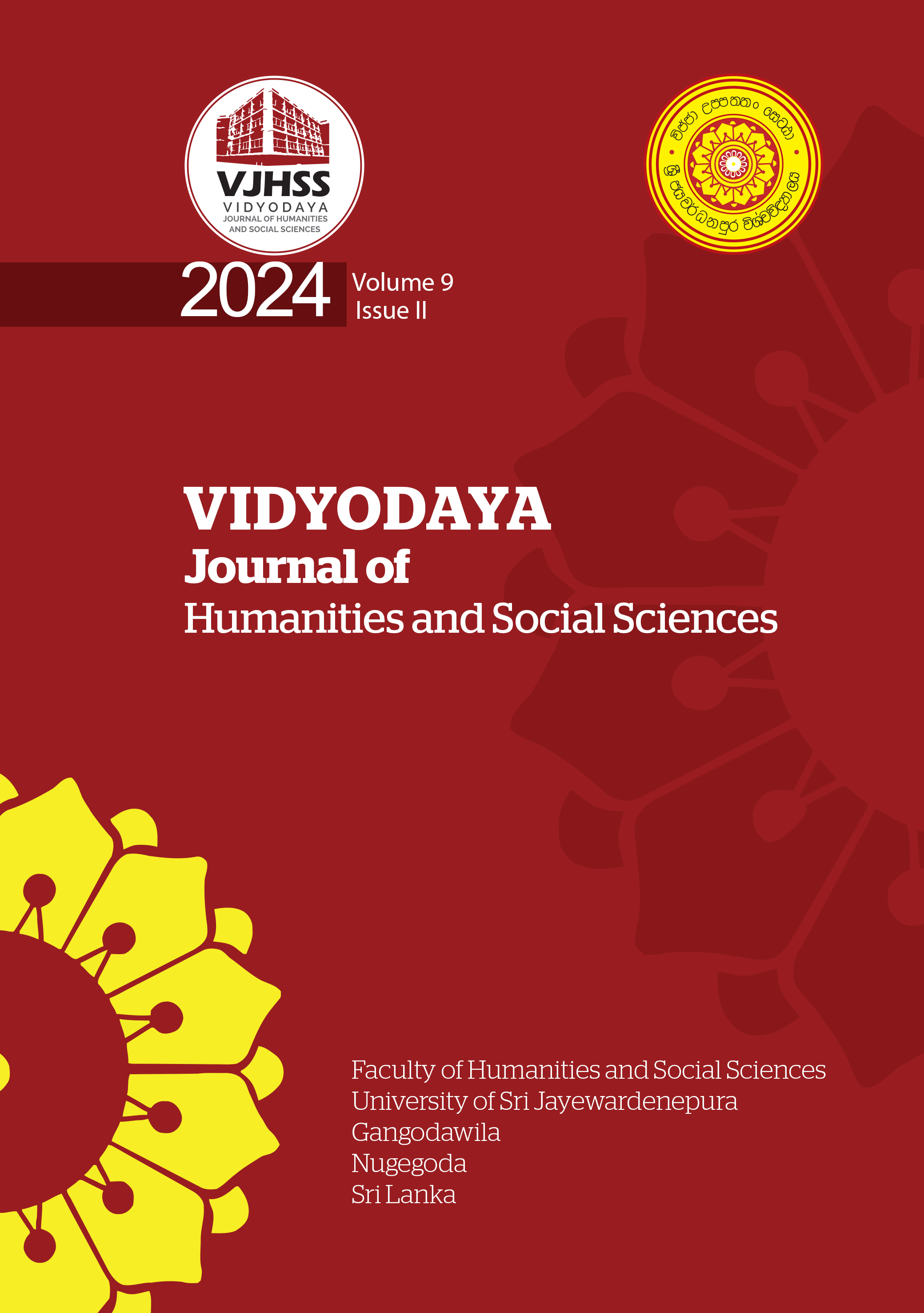Changes in Coastal Landforms from the Poonaryn Peninsula to the Malwathu Oya (Aruvi Aru) Estuary, Northwestern Coastal Zone (NWCZ) of Sri Lanka
Abstract
Changing coastal landforms are constantly occurring due to wind, waves, sea currents, tidal fluctuations, and human interference. This paper makes a special effort to ensure the correct usage, management and utilization of these landforms, which will benefit society through economic growth. A variety of peculiar coastal landforms have formed between the Poonaryn Peninsula (9°36'10.23"N, 80°03'16.74"E) and Malwathu Oya (Aruvi Aru) estuary (8°46'30.22"N and 79°56'12.85"E), which are approximately 120 km long coastal stretch. The Poonaryn Peninsula extends from Pallikuda Beach to Kalladi Yutha Kovil (9°35'53"N, 80°3'10"E). The peninsula stretches northwest to southeast, covering dunes with a maximum elevation of 17 meters. The selected study location is favourable for the coastal environment, and the coastal environment can be defined as the area lying at the interface between land and Mannar Bay, Palk Bay and a part of the Jaffna Lagoon. This area includes non-barrier delta estuaries with seasonal rivers and bar-built perennial delta estuaries. The zone of shallow water within which waves can move sediment and the area landward of this zone, including beaches, low coastal dunes and vegetation cover, are affected to some degree by the direct or indirect effects of waves, tides, winds and currents. The coastal environment itself may extend inland for many meters or kilometers. These processes make it possible to identify several coastal habitats, such as mangroves, salt marshes, covered and covered dunes, beaches, barrier beaches and spits. Lagoons, riverine estuaries, brackish water bodies, water holes, and marshes. When considering biodiversity, local and migratory avifauna, beach mangroves, seagrass beds, tidal creek system are very important for tourist attraction. Additionally, fishery harbours, boat landing sites, traditional fisheries (beach seines, koodo fishing), etc., and tourism were established in the northwestern coastal stretch owing to enticing coastal processes and landforms in the area for correct usage, management and utilization for enormous benefits of the fishing society, the environment and the economy.



